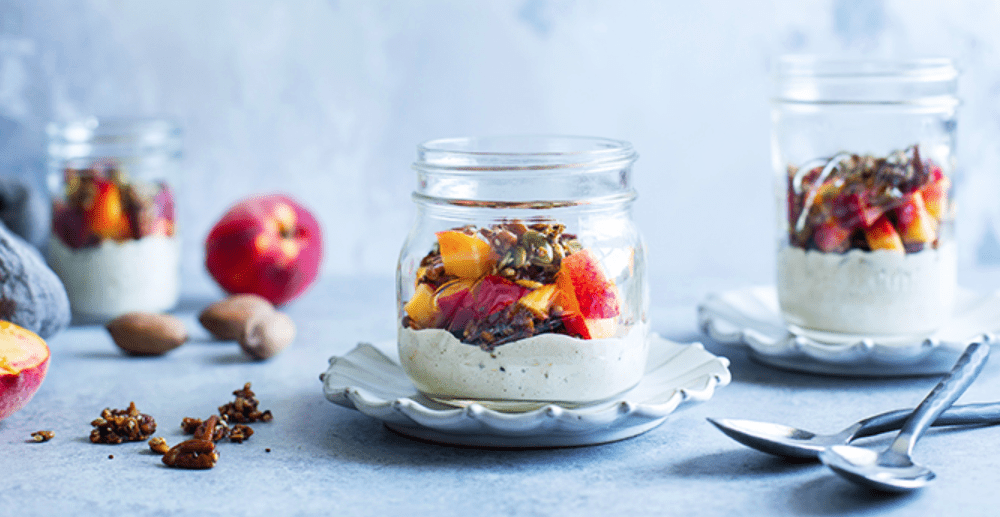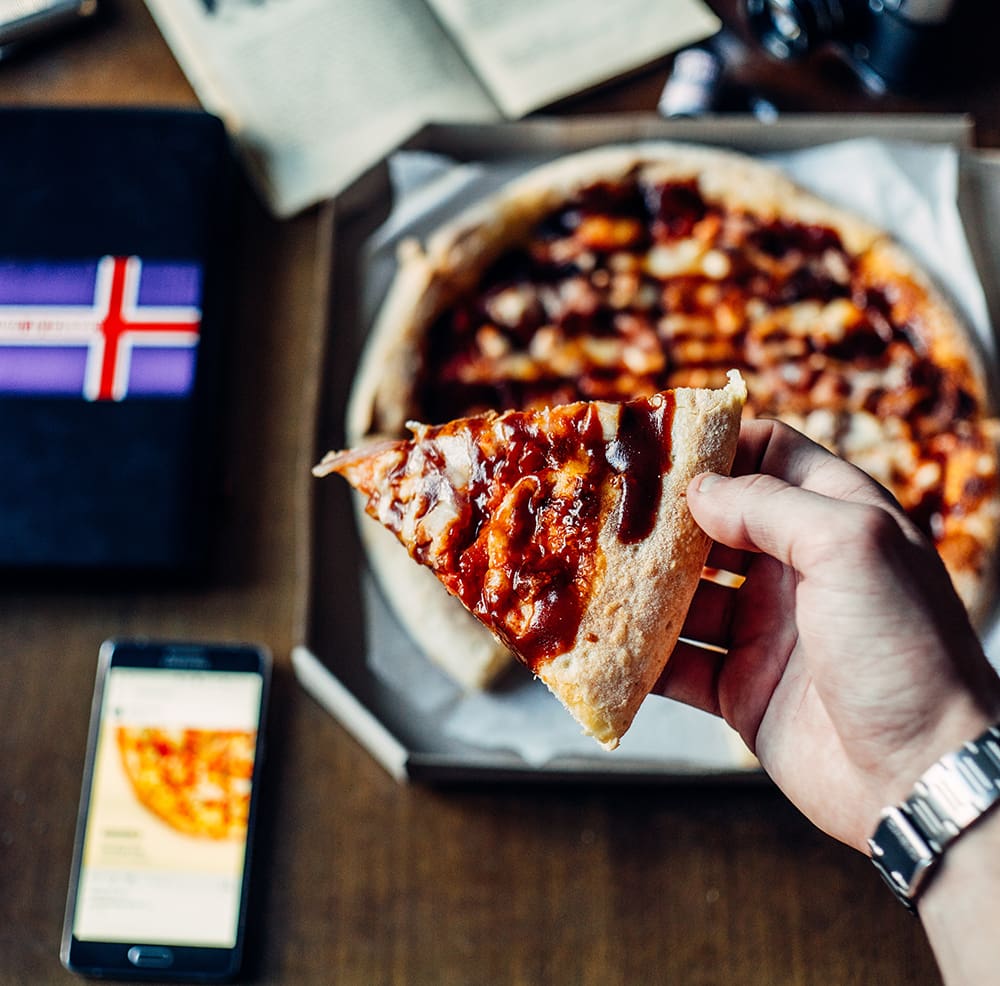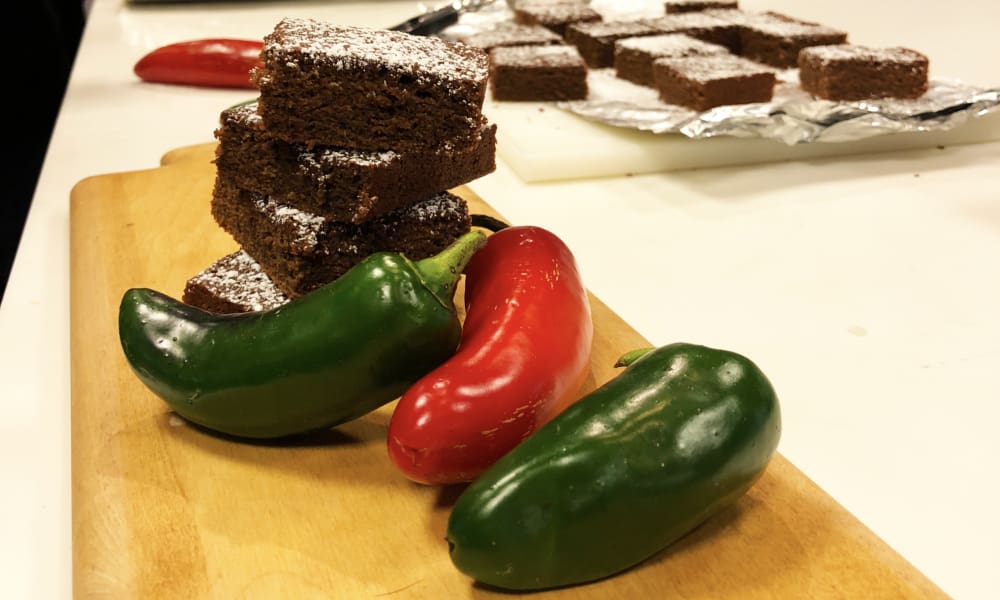For the 30th year, The Food Channel® issues its annual food trends report. The information is based on research conducted by the behavior science company CultureWaves® and identifies some of the significant shifts in behavior expected in 2019.
A Frozen Comeback

No, not the movie—we’re talking about the frozen food aisle. It’s a combination of new technologies and a new acceptance that frozen food can be a big part of the convenience we continue to seek. Processes such as “fresh frozen” are bringing new options to the forefront.
In addition, new flavors spurred by innovation in ethnic foods are showing up in frozen; and, Millennials are now looking for time-saving solutions that still offer unique and premium food experiences. The frozen food aisle is also a new place for experimentation by brands, particularly in dessert forms and flavors. Expect more innovation to show up in frozen, and more use by younger consumers who previously have stuck to the outer edges of the store.
Probiotics

We’ve seen this coming on for years, and it’s not slowing down. As Americans, in particular, become intentional about what they eat and drink, they want to get the most out of what they put in their mouths. Probiotic labeling is big, and is an extension of what we called out in 2008 as “functional food,” in 2009 as “frankenfood” and in 2010 as “food with benefits.”
Increased awareness of the benefits of probiotics has created a new market that leverages advances in microbial benefits for overall health. Consumers are now asking for probiotic products to be a one-stop-shop for dietary needs, and brands are creating proprietary bacteria to cater to specific consumer demands. Expect consumers to gain a greater understanding of the science behind probiotics and to trust specific labeling more than buzzwords like “organic” or “fresh.”
Other terms aligning with this trend are DNA-based eating and the whole world of nutraceuticals and even brewtraceuticals.
https://foodchannel.com/2010/top-10-food-trends-for-2010
https://foodchannel.com/2009/the-food-channels-top-ten-trends-for-2009
For our full report on Probiotics, contact us at info@foodchannel.com.
Accessible Ethnic

The food world has talked about ethnic flavors for years, but the last few years have seen remarkable changes in availability and knowledge of global spices, menu items, and ingredients. While still dominated by Asian and Mexican influences, the new ethnic is less about “Americanizing” the foods and more about adopting/integrating new cultural influences as they are.
Our forecast is that ethnic food will be considered a starting point, rather than an add on. What’s more, the increasing influence of global cuisine means that we will redefine what is ethnic and will simply come to expect more variety, more flavors, and more combinations than ever before.
Cannabis

You’ve got hemp, you’ve got CBD, and you’ve got THC. There’s medical marijuana, cannabinoids, and hash. With all these terms, and more, what does it really mean to the food world? In short, its considered a new ingredient with which chefs and operators are experimenting, and some form of the product is showing up on the menu and in a surprising number of mainstream brands.
Legal or not, brands are planning for the future; and, as cannabis becomes more accessible, the product (particularly CBD and THC) is crossing over food and beverage. This trend merges at some point with the idea of functional foods (see probiotics, above), as there are claims surrounding stress relief and relaxation. We expect to see a lot of innovation in products as well as in positioning, particularly as the conversation around legalization continues.
Polished Casual

With all the industry talk about the death of casual dine—which, incidentally, is still up for debate—a new term has come into play: Polished Casual. The term is defined as somewhere in between trendy fast casuals and fine dining, with attentive service and creative cuisine while still being approachable. Beyond the definition, it’s about restaurants focusing on something that is both unique and classy. As consumers are exposed to more unique dining experiences, the desire for a great food story mixed with a unique experience is now expected to be fulfilled. Brands and operators are responding by creating destination-worthy dining experiences.
We consider it a new hybrid of fine dining aesthetics, unique menu items, and a casual atmosphere (consider it fine dining without the suit). The idea is to allow food to become the star. This hybrid allows operators to find a niche and capitalize on it, building a story accompanied by beautiful design, modern trendy flavors, a touch of unexpected luxury, and, yet, a casual environment that feels inviting and social.
Blockchain

Call it traceability, or food security, but the term you really need to remember is “blockchain.” It’s the primary technology used to guarantee food authenticity and traceability. If you don’t believe us, believe Walmart, which has been working with IBM to create a food safety blockchain solution—and, in September of 2018, began rolling out a requirement (which goes into effect next year) that produce suppliers make their data available in the blockchain system. The simplest explanation for this technology is that all along the supply chain, producers input their information, so that food is instantly traceable each step of the way.
Blockchain actually started out as a security protocol for Bitcoin, and (to the best we can discover) first used in food to trace pork exports in China, and mangos in the U.S. Now, food traceability companies TruTag and Tag-It have partnered to bring edible barcodes and blockchain transparency into the cannabis market, to ensure that legal cannabis is correctly using distribution avenues. We expect usage and awareness to continue to grow, as companies get on board even before consumer expectations begin to demand this type of food security.
See CultureWaves’ blog on blockchain. http://culturewaves.net/2018/11/culturewaves-q3-blockchain-transparency/
Employee Care

Restaurant, catering, food manufacturing—those are just the tip of the iceberg when it comes to food-centric jobs. For years, even though most people in the U.S. reportedly get their first jobs in foodservice, the jobs have been considered starting points and not careers. Today’s food industry has slowly changed that perception, particularly as younger generations eagerly seek out jobs that feed their food passions.
We’re beginning to see operators and manufacturers pick up on this trend and begin catering to their employees. Yes, even in an era when robotics are threatening even front-of-the-house jobs—it’s trending to pay attention to the needs of employees. Some workplaces are even allowing pets (no, not in the kitchen, but in offices, during work social occasions, etc.). Check out where we called this out in 2017’s report.
Brinker deserves a call out for its education program, Best You EDU, that offers a range of educational assistance, from bilingual coaching to tuition payment. And, of course, there’s famed Union Square Hospitality Group head Danny Meyer, who has been an advocate for no tipping (as called out in our 2016 Top Ten Food Trends – https://foodchannel.com/2015/2016-top-ten-food-trends-food-channel). That was the year his company began implementing a plan to better compensate its employees, as well as giving them a career path for advancement. We expect more food companies to take notice and begin to prioritize their employees, even as greater technology comes into play.
Pick Up

We’ve talked about delivery before, but there is a new focus on pick up. Sure, there are still bugs to be worked out, and media are having a fine time comparing speed and accuracy among the various top providers (e.g. Walmart, Amazon, Target). However, as Gen Z enters the market all the doubt and confusion will go away, and this will become an accepted practice for more and more people of all ages. We expect companies to figure out how to give a “shopping experience” along with selected items, so that endcap and in-store displays still have a fighting chance even in an online experience.
And we expect that even the hesitant (“Will they get my order right?,” “Do I have to tip?,” “What if I want to make a return?”) will recognize the benefits of a faster, less cumbersome shopping trip. Social media is full of this discussion, with people calling out how they save money, time, and—one of the biggest drivers—don’t have to take their children into the store. This is all part of the new delivery system that meets customers more than halfway. Domino’s will even find you in a park or other public space, thanks to geolocation technology. This is a category that will continue to evolve and only get better.
Food Philanthropy

It’s been called cause marketing, values-based buying, and, sometimes simply, “the Tom’s Shoes model.” What consumers are asking for now is authenticity. In other words, don’t give just to get my attention. That worked for a while with Millennials, but they’ve gotten savvy and don’t give their loyalty away as easily these days. Instead, give because your brand, your employees, your leadership are all behind a particular cause or charity.
Show me you care with something besides matching my money—are your people actively involved in the cause? Are they meeting the suppliers of your ingredients, for example, and working with them to ensure they have the needed resources? Are your people active in your own community, intentionally contributing to economic development and basically being a good neighbor?
Companies are taking a new look at this approach, and moving toward longer term commitments and purpose-driven programs that truly reflect the values of the brand. We predict renewed attention and an altered approach to how brands, both big and small, promote the cause(s) they support—and, along with that, a new acceptance from a skeptical consumer marketplace.
New Heat

When it’s really, really hot, it’s no longer a flavor experience, right? Heat has been in danger of becoming a competitive sport, when what the consumer is really looking for is something that tastes good, offers a new sensation, yet is still edible. One of the things driving us toward heat is the “health halo” given hot peppers, spicy ingredients and hot sauce for use in digestion, balancing metabolism, and ramping up the immune system. There are few households anymore that don’t have some version of a spicy condiment at hand. Sitting alongside ketchup, mustard, and other traditional flavors and sauces, consumers are still experimenting andlooking for the next great thing in the combination of heat and flavor.
In addition, heat is used as a cultural gateway, enabling dishes to take on cultural flavors while remaining unique and unexpected. Chefs and cooks are experimenting with traditional heat in new ways, creating a new wave of heat-infused and culturally-rich menu items.
We continue to watch trends from previous years as they continue to grow:
- Savory—We continue to see new dessert launches with a focus on savory, while, at the same time, entrees and appetizers gain a sweet component.
- Pets—We called this out in 2017 but there is still a lot of innovation in pet food, which often mimics human food.
- 3-D Printing—This moved to the background for a while as the technology caught up with some of the ideas, but lately we’re seeing some new approaches that look interesting. Stay tuned for more in that category.
- Food Tourism—As hotels/motels, in particular, search for a way to become destination-worthy in their own right, they are honing in on culinary opportunities such as cooking classes, local farm tours, and local celebrity chef-inspired menu items.
- Food Waste—This is particularly focused right now on food trucks, mom & pops, and boutique restaurants without some of the bigger resources available to chains.
You’ll find links below to our three most recent Annual Trends Reports.
https://foodchannel.com/2017/the-food-channels-2018-top-ten-food-trends
https://foodchannel.com/2016/2017-top-ten-food-trends-food-channel
https://foodchannel.com/2015/2016-top-ten-food-trends-food-channel


You must be logged in to post a comment.